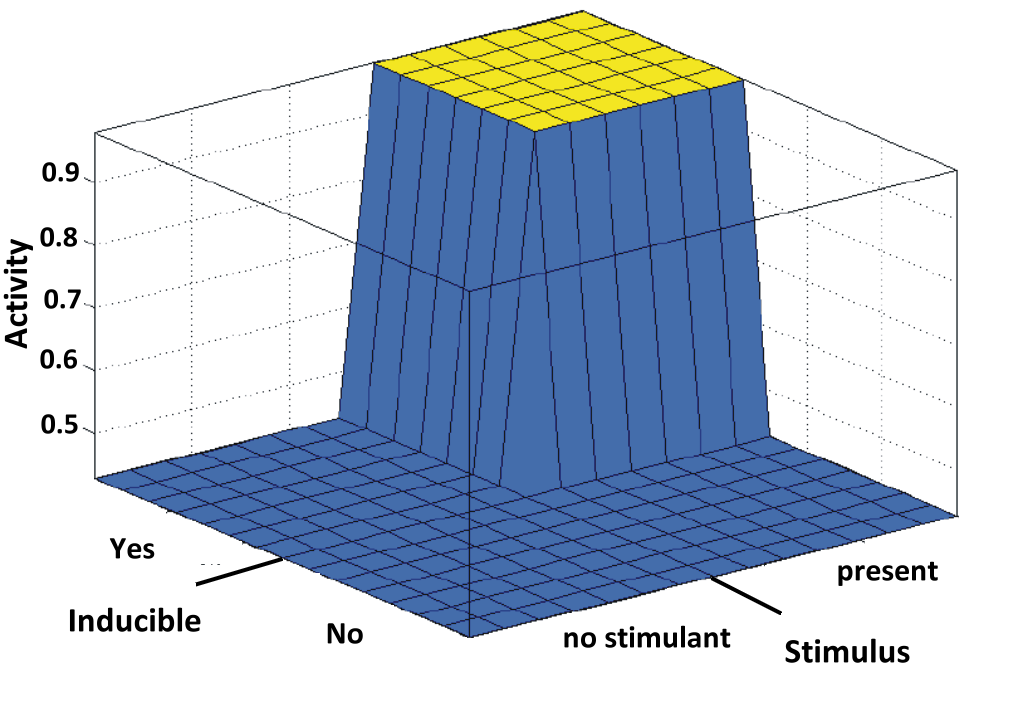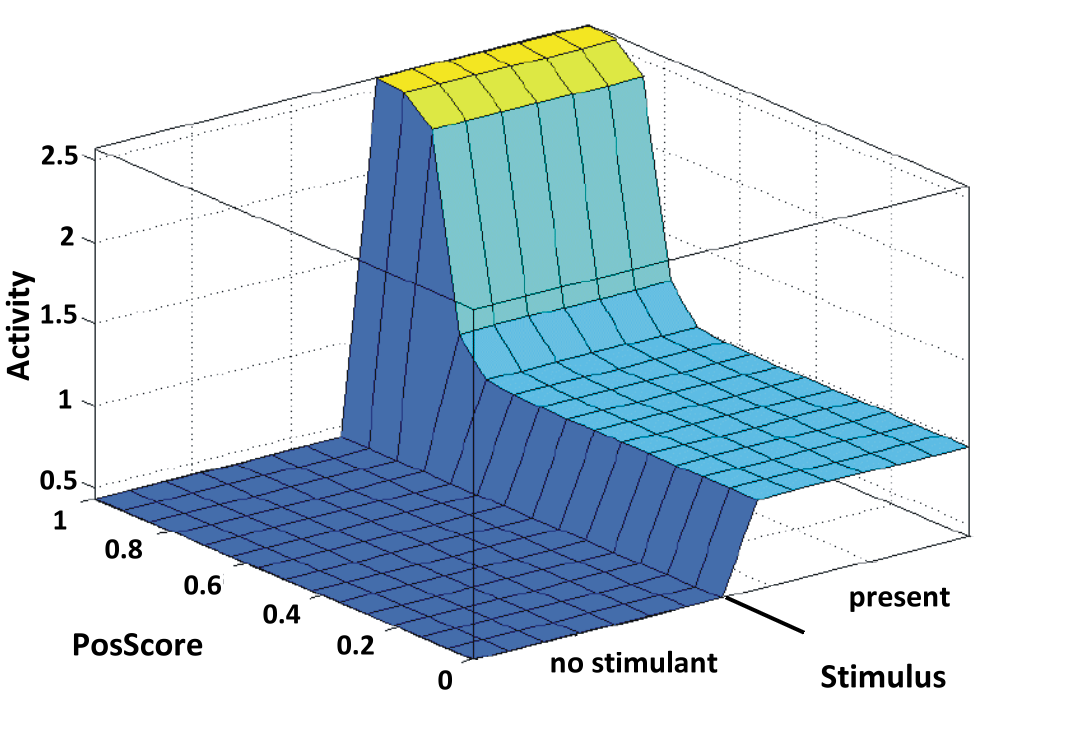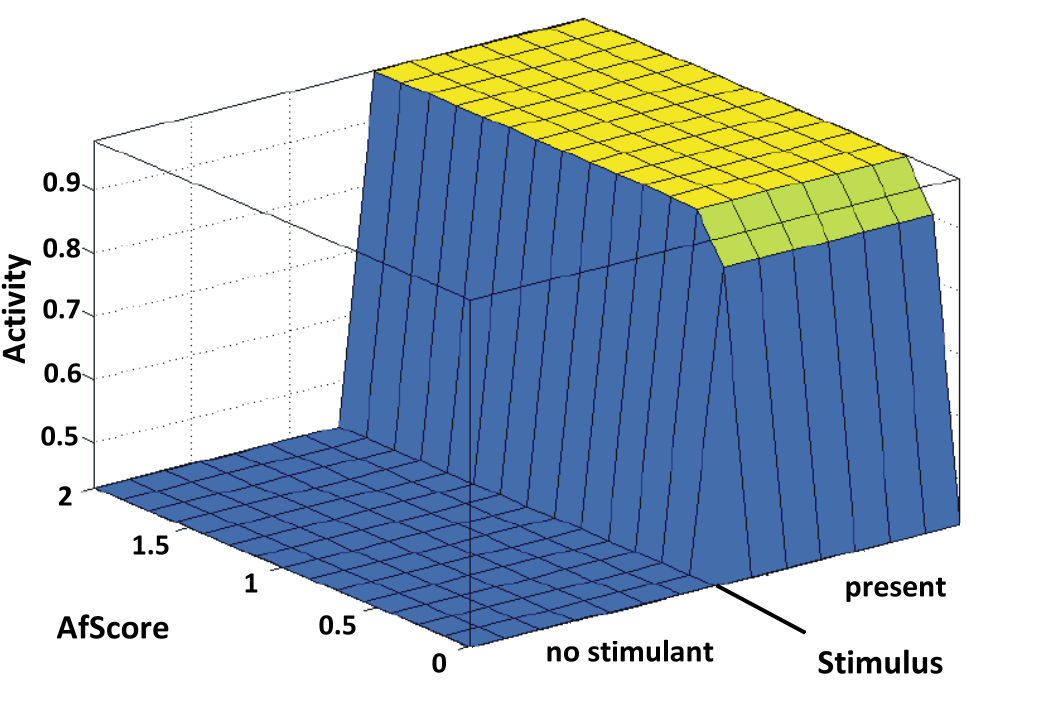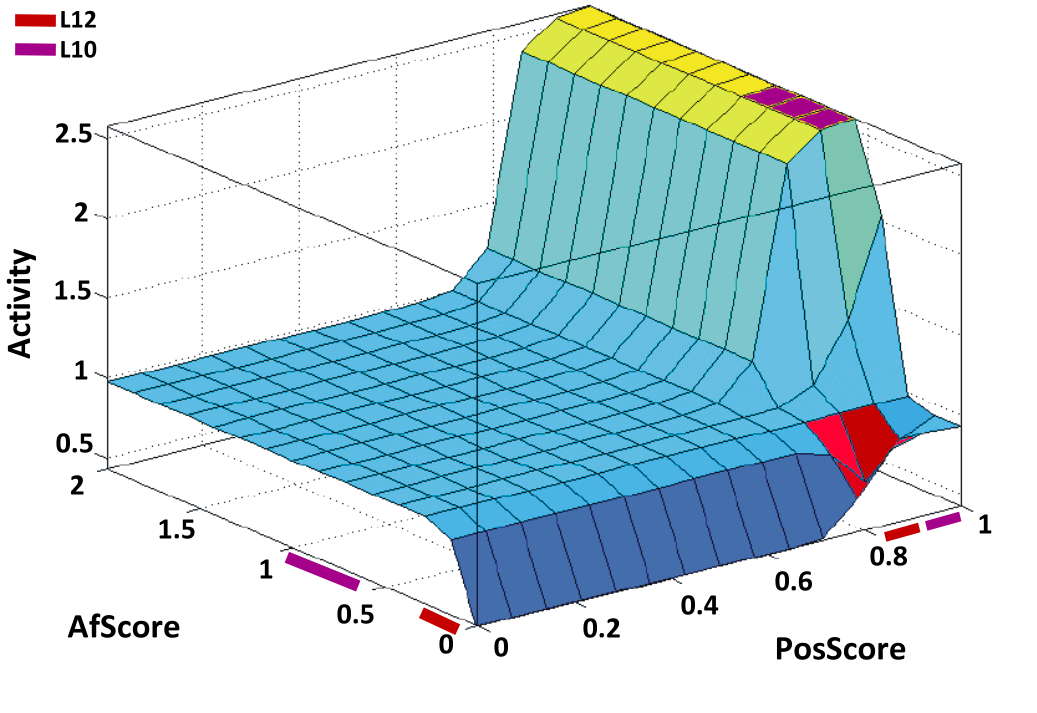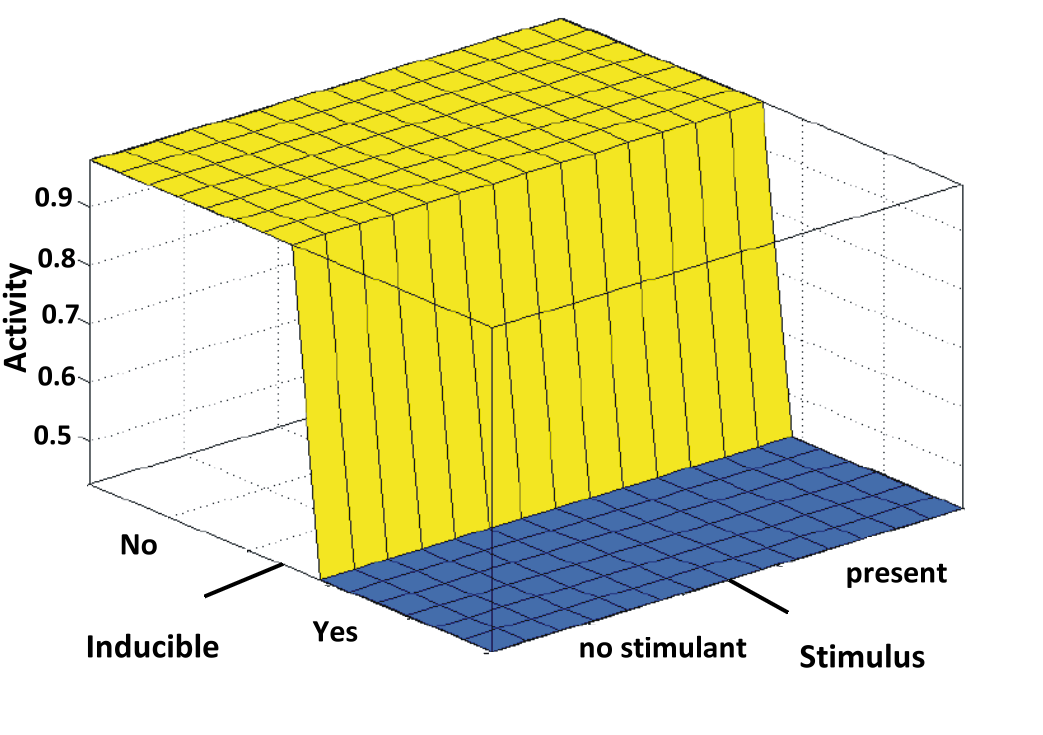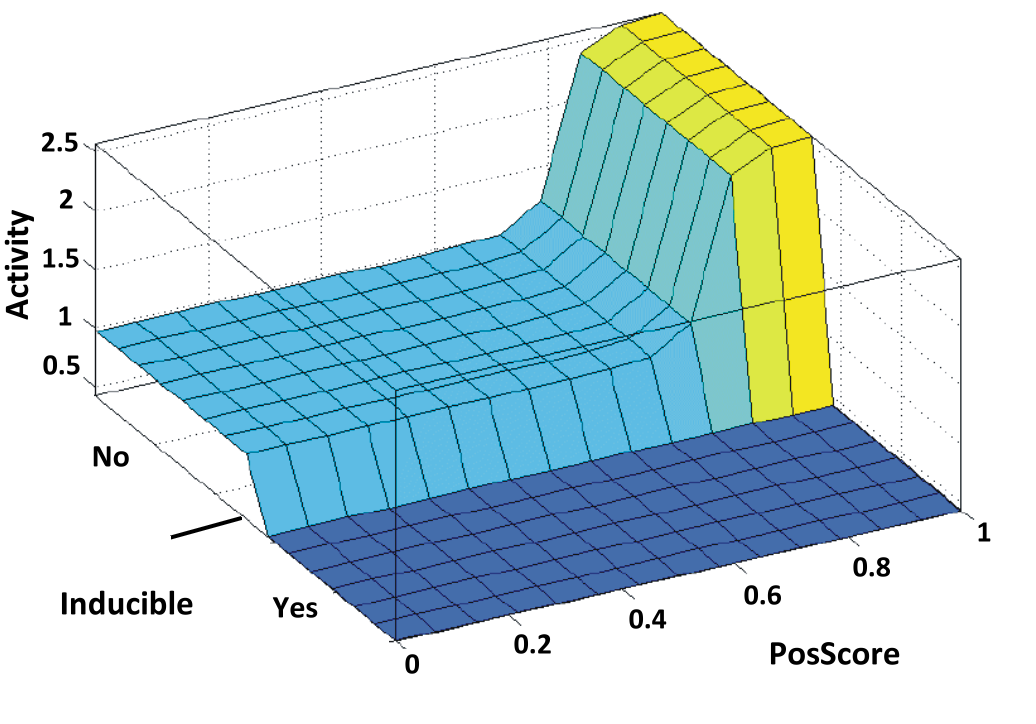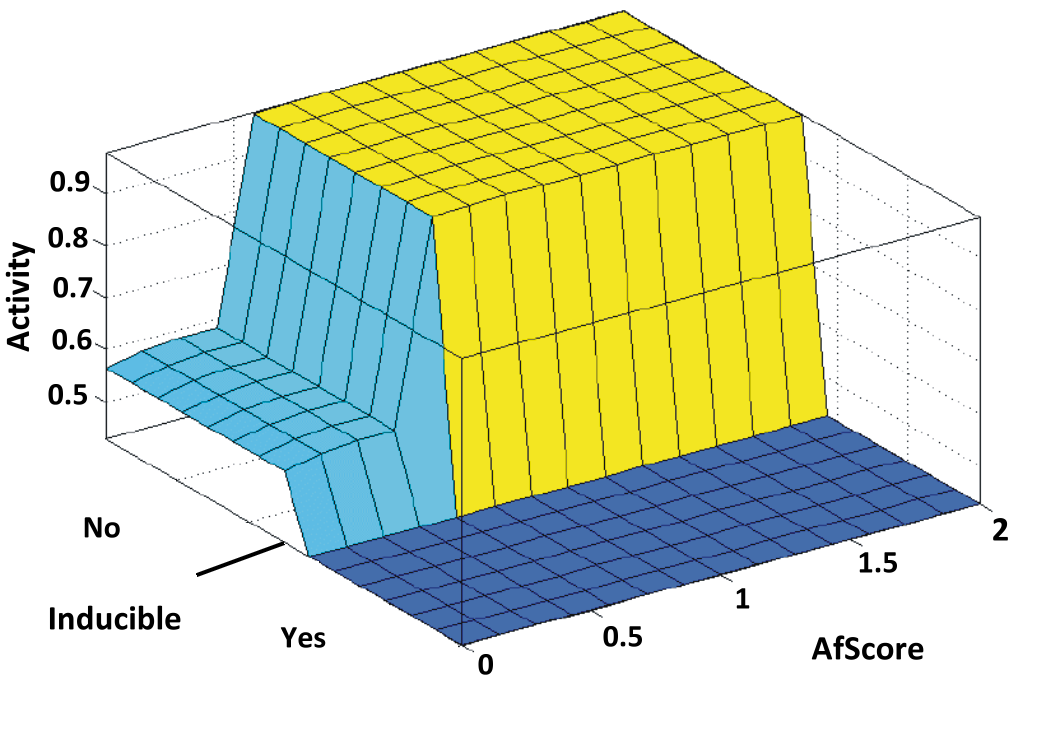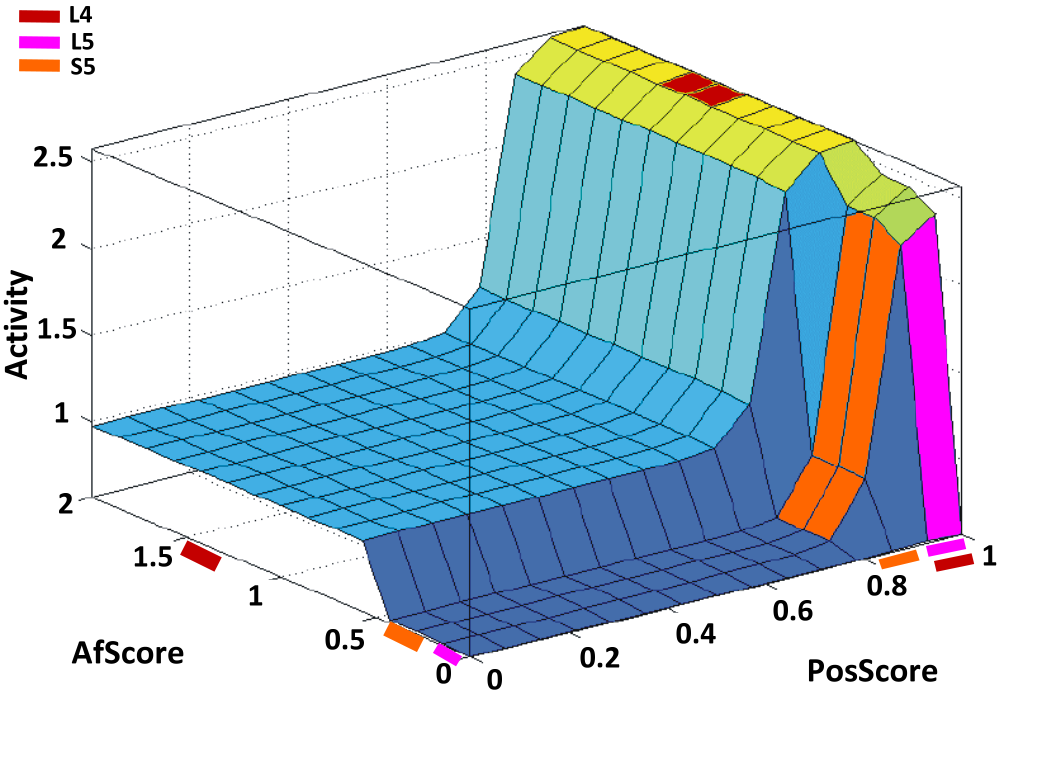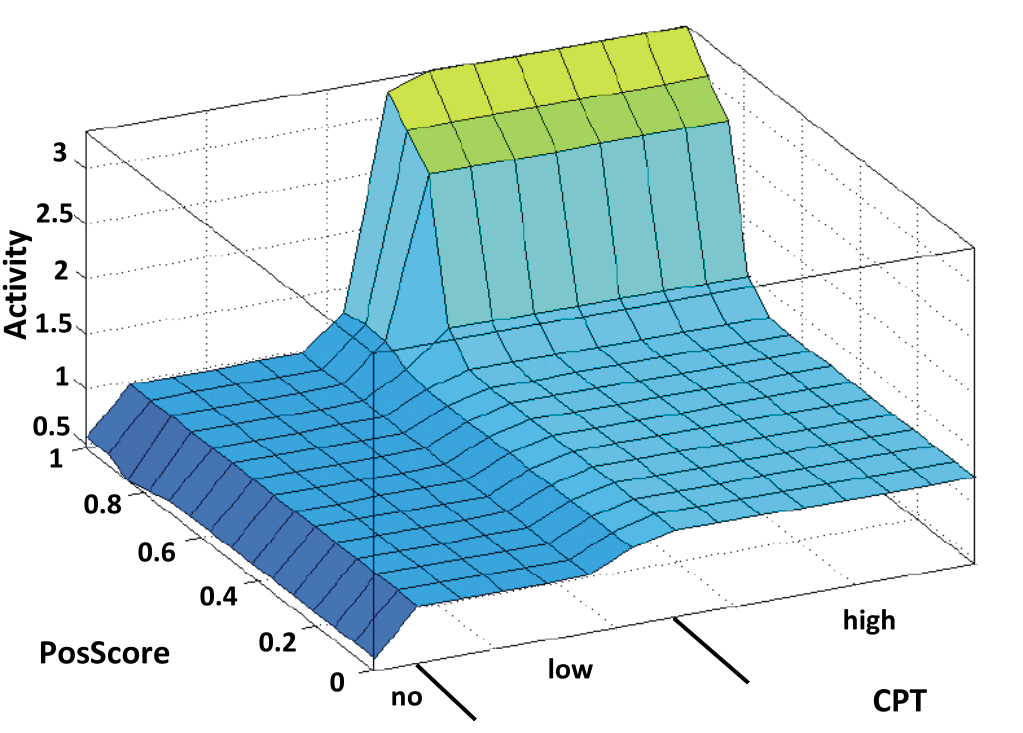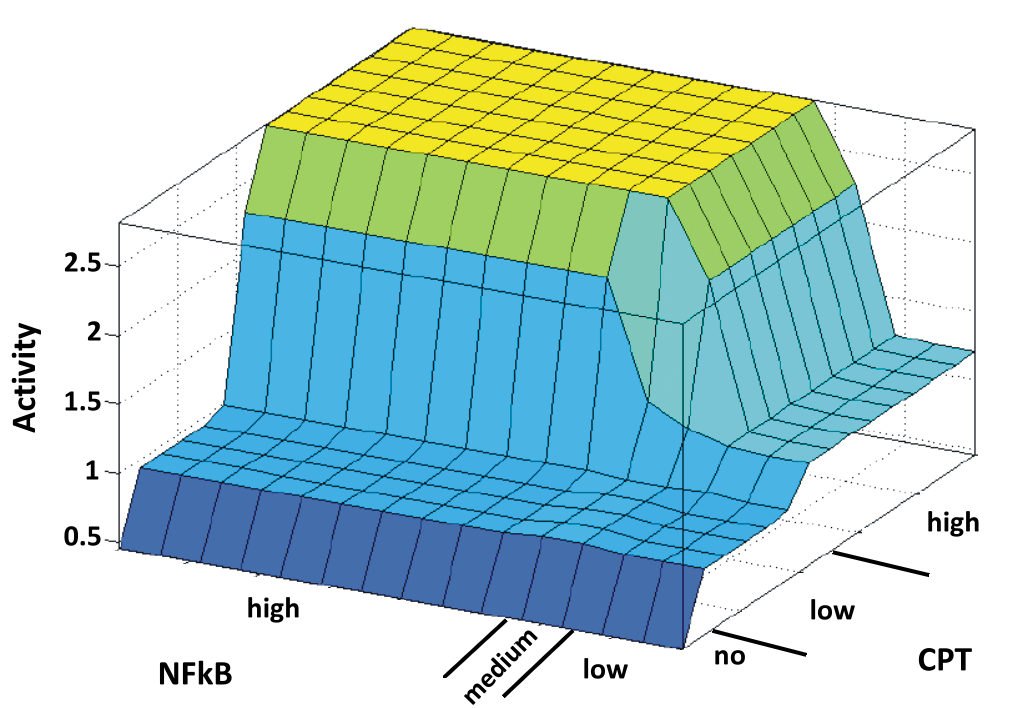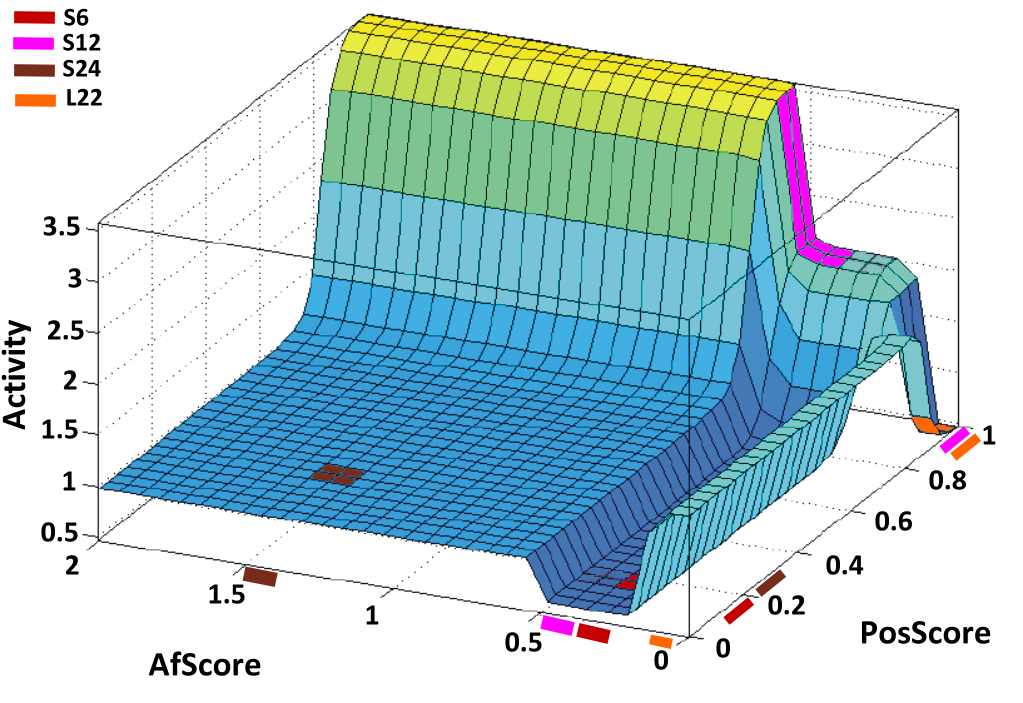Team:Heidelberg/HEARTBEAT network/Results
From 2009.igem.org
HEARTBEAT Fuzzy Modeling - RESULTSContents
Modeling inducible promotersCapturing the basic behaviour of an inducible promoterBased on prior data analysis of data derived from flow cytometry experiments using inducible synthetic NFkB responsive promoters we developed a fuzzy controller which reflects the behavior of inducible promoters. By using our model we were able to capture the basic behaviour of an inducible promoter (Fig.1).
Capturing the impact of one parameterOnce this was accomplished, we aimed for capturing the dependency of the activity of the promoter on more heterogeneous parameters, such as affinity score, position score and presence stimulation (Figs. 2a and 2b). As expected, promoter activity was observed only in the presence of a defined stimulation. Obviously, the affinity score produces a more dynamic, steep gradient in a certain range whereas the position score changes the promoter activity only slightly.
The combinatorial dependency of promoter activity upon stimulationFinally, we tested the combinatorial dependency of promoter activity on both position and affinity for an inducible promoter upon stimulation (Fig. 3). According to our result, an optimal promoter activity is obtained only in case the promoter sequence harbours a high position as well as a high affinity score. As obtained above, a high affinity score raises the promoter activity to a certain level (and therefore can be considered as a more crucial parameter). A shift towards a high position score, however, is still needed to reach an maximal promoter activation. Our final model of inducible promoters (Figure: NFkB 1...which figure?) shows the relationship between stimuli, type of promoter, i.e. inducible, affinity score and position score. The model predicted a high dependency of the promoter activity on affinity score revealing its crucial role in TF binding and transcriptional activation. In addition, a certain level of the position score is required for the promoter sequence to augment its promoter activity and reach the maximum, thereby becoming an optimal inducible promoter Importantly, our model captures the behaviour of an inducible promoter. We next targeted another type of promoters. We wondered whether we would be able to establish the same functional model for an non-inducible promoter (constitutively active, short: constitutive). [TOP]
Modeling constitutively active promotersIn parallel to the rationally designed synthetic promoters our team created a set of randomly assembled synthetic promoters which are constitutively active by using RA-PCR. Based on data analysis of flow cytometry experiments we developed another fuzzy controller which reflects the behaviour of constitutively active promoters. Capturing the basic behaviour of an constitutive promoterBy using our model we were able to capture the basic behaviour of an inducible promoter (Fig.4). According to our model, constitutive promoter is only active if it's type is selected to be "not inducible". We showed that the constitutive promoter acted independently from the presence of an stimulus.
Capturing the impact of one parameterBy accomplishing this, we again aimed for capturing the effect of single parameters on the "constitutive system"(Figs. 5a and 5b). A gradient of transcriptional activity was observed when varying the position score over the whole range (Fig. 5a). No difference was shown between a invoked system (stimulus = "yes") and a non-invoked system (stimulus = "no"). The affinity score showed the same behaviour (data not shown). We also showed the effect of the sequence affinity on the outcome of the model (Fig. 5b). Interestingly, the system showed a three-step behaviour decribing a low (basal activity), an as well as a high activity state. Hereby we also took the promoter type into account. As expected, the promoter was only active if the promoter type was set to "constitutive". The same behaviour was documented for the position score (data not shown).
Effect of TFBS position and TF affinity on promoter activityFig. 3 shows the combinatorial dependency of constitutive promoter activity on both position and affinity. In the range of a high affinity score, the system behaves similar to our system describing inducible promoters. In general we can state that these results support our hypothesis that the affinity score has to be considered as a crucial parameter besides the position of a TFBS on a certain promoter sequence. Still, both scores hast to be in a high range in order to reach maximal promoter activation. Analogously to our previous model of inducible promoters, in here we were also able to capture the relationship between stimuli, affinity score and position score for an constitutively active promoter. It was able to reproduce the behaviour of the sequences derived by RA-PCR. It showed a three-step-dependency of the transcriptional activity on the affinity score which was in good accordance to prior observations. Having accomplished the development of two primary fuzzy models, our next task was to integrate a highly senstive, inducible promoter (p53) which comprises not only the basic behaviour but also reflects more complex behaviour. Different stimulant concentration levels and a further pathway will be considered as auxiliary inputs. Modeling p53 - a high sensitive promoterIt has be previously described that the crosstalk between the tumour supressor p53 and NFκB pathways regulate apoptosis [REF!]. As a further challange, we aimed at integrating this complex behaviour into our HEARTBEAT fuzzy network model. Herefore we used HEARTBEAT to evaluate eight p53 responsive sequences which were generated using our newly postulated RA-PCR. Subsequently calculating their respective respective positions and affinity scores, we would like to measure the activity of these sequence upon induction with CPT (camptothetin), as CPT has been established to promote apoptosis [REFERENCE!!!]. Thus, our model was designed to reflect the relationship between NFkB activity, increasing concentration of CPT as well as affinity and position score of the eight p53 responsive sequences to the respective inducible promoter activity. Basal performance of the p53 promoterOur model which has p53-responsive promters as a integrative system was able to capture the basic behaviour of an inducible promoter similar to Figs. 1-3. It was only active if it was invoked with a certain stimulation and each single parameter hat an enhancing impact on the transcriptional activity (data not shown). Advanced performance of the p53 promoterDifferential stimulation resulted in several activity levelsWe first characterized the impact of newly introduced parameter, the stimulation by camptothecin (CPT). Figs. 8a and 8b show the outcome of our model for variable CPT concentration depending on the position score as well as on the affinity score, respectively. As shown in Fig. 8a, only a high CPT stimulation led to an enhanced promoter activity. Thereby the position score had an decisive role in jumping to a highly active state. A similar result was obtained when level of CPT stimulation was compared to the affinitiy score (data not shown). The combination of CPT NFκBAn maximal set of parameter inputs is essential for optimal promoter activationlater on: we have ... for the inducibles, ... for the constitutives. now: could this be fused(?) for a prediction of combinatorial behaviour of point out: different promoter design, different experimental measuerment, as well as literature data -> final model? and then jump to final model. fuzzy integrator: final model for combined activity[TOP]
|
 "
"
